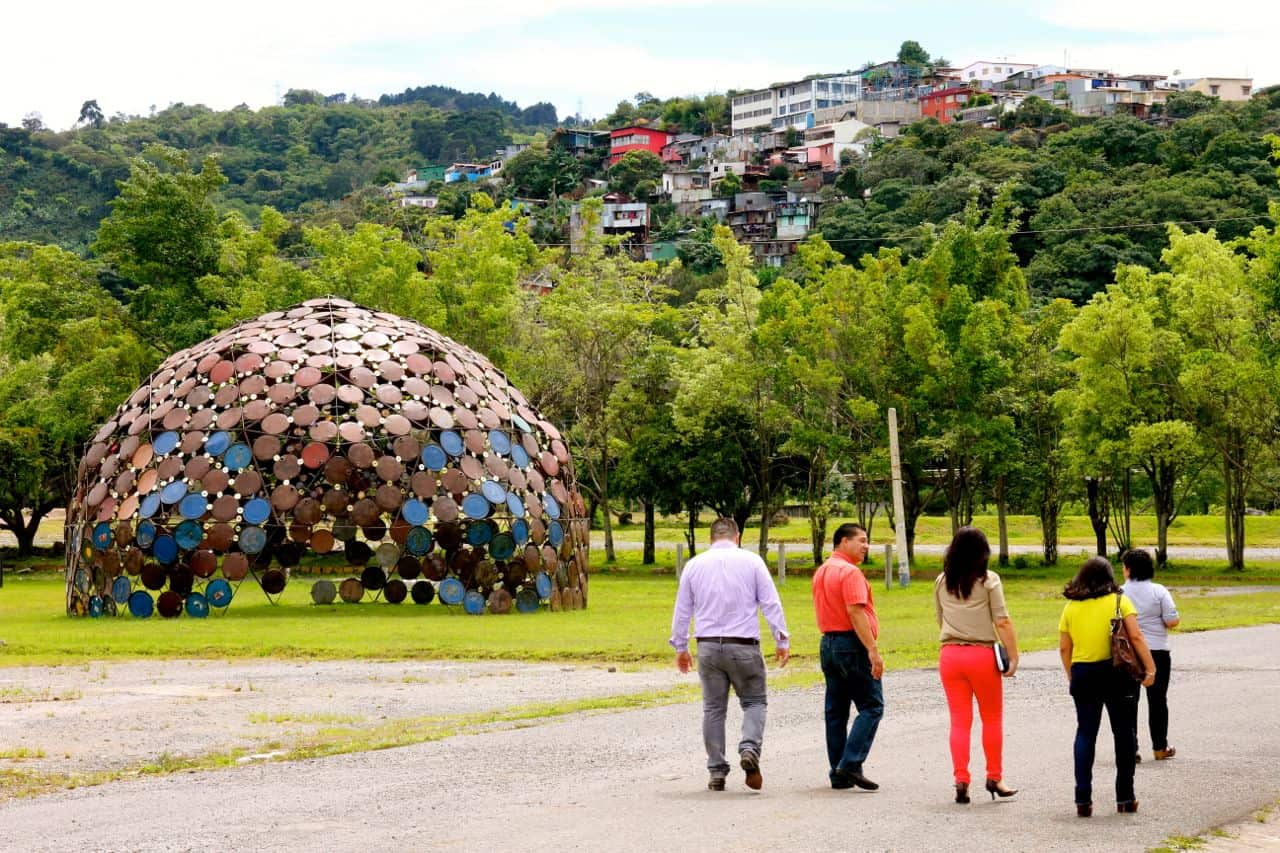More than 90 environmentalists and academics and some 30 social organizations have signed a petition in opposition to a new plan to expand the Greater Metropolitan Area (GAM) in the Central Valley, calling it “a grave threat” to the environmental sustainability of the area.
The Territorial Ordering Plan for the Greater Metropolitan Area (POTGAM 2030) is a document created by the National Institute for Housing and Urban Development (INVU) to rejuvenate the Central Valley’s urban planning. Currently, zoning and urbanization is governed by a 30-year-old document called GAM 1982.
GAM 1982 established, among other things, a “ring of contention” serving as a buffer between urban areas and areas of environmental sensitivity. However, it also allowed for certain exceptions to development outside the ring of contention, including along public roads.
“In the last 30 years there has been disorganized urban development outside of the ring of contention,” said Allan Astorga, a geologist and environmentalist at the University of Costa Rica. “Studies and analyses have shown approximately half a million people live in conditions of high or very high risk.”
Not only are people living outside the ring of contention in areas of environmental sensitivity, Astorga said, but they are also in areas subject to daily threats of mountain living in Costa Rica: landslides, earthquakes and volcanic activity.
In 2003, the Costa Rican government created the Regional Urban Planning for the Greater Metropolitan Area Program, to update GAM 1982. That project received funding from the European Union to the tune of approximately $14 million with another several million dollars supplied by the government.
Astorga worked defining environmental priorities for the 2003 proposal, classifying three environmentally fragile zones for the area outside the contention ring: moderately fragile zones, highly fragile zones and very highly fragile zones.
Highly and very highly fragile zones include areas where aquifers, rivers, forests and seismic and volcanic zones exist (TT, March 12, 2010).
In 2009, INVU rejected the updated plan, but one thing that did come out of the process was the zoning of environmental areas in the GAM, approved by the National Technical Secretariat of the Environment Ministry in 2006.
Astorga claims the new plan contradicts the Environment Ministry agency’s environmental zoning.
Eugenia Vargas, executive president of INVU, told the weekly Universidad Semanario recently that INVU rejected the 2003 plan because of deficiencies in the report. “The studies were very good, but not the document,” Vargas said.
The 2003 plan formed the basis of the new proposal.
In the same interview, Vargas rejected the notion that POTGAM 2030 would affect environmentally sensitive areas or aquifers, saying that INVU is “very strict in environmental issues” and is working with the National Groundwater, Irrigation and Drainage Service to avoid damage to aquifers that are the principle sources of water for the Central Valley.
It is hard to know exactly where the truth lies in the discussions. According to Housing Minister Irene Campos, POTGAM 2030 is still under discussion by the government.
“The proposal named ‘Territorial Ordering Plan for the Greater Metropolitan Area,’ prepared by the Institute for Housing and Urban Development, is under revision and study at this moment. Because of that, I am unable to give a particular opinion about the proposal,” Campos wrote in an email to The Tico Times.
Astorga is basing his complaint against POTGAM 2030 on a version of the document he was able to review “unofficially.” He said that, using data from the version of the document he saw, and superimposing maps of the proposed expansion of development outside the ring of contention established in 1982, POTGAM 2030 proposes to expand GAM by approximately 150 million square meters, much of that into mountainous areas.
Vargas told Universidad Semanario the proposal would only incorporate areas that are already becoming urbanized due to loopholes in the 1982 framework.
One of the major proposals in POTGAM 2030 is the construction of two six-lane highways forming an arc along the border of the ring of contention connecting Cartago east of San José to Turrúcares west of the capital, Vargas told Universidad Semanario. She added that development could be regulated along these roads.
Eduardo Brenes, former head of the 2003 study, pointed out the high cost and long hours of consulting put into the original proposal.
“So, the question that arises very naturally,” said Brenes, “is how, after so many years of work and such an important investment of resources … a plan suddenly appears that has no mapping and no proposal based on its own studies.”
Both Brenes and Astorga voiced suspicions that INVU’s new plan will cater to urban housing developers who want to urbanize the mountains of the Central Valley.
There should be more public debate, they said, including input from communities inside at the edges of the Central Valley that would be affected by expanding GAM.
“Above all,” Astorga said, “I believe it is key to request that there be public discussions about the POTGAM 2030 proposals, … and what the [2003 study] proposed as well.”
Vargas told Universidad Semanario she hopes to have the new plan approved by the government before May. Campos said in her email: “The document is in internal revision and discussion; once it passes that step it will be made public for discussion.”






